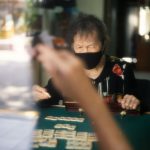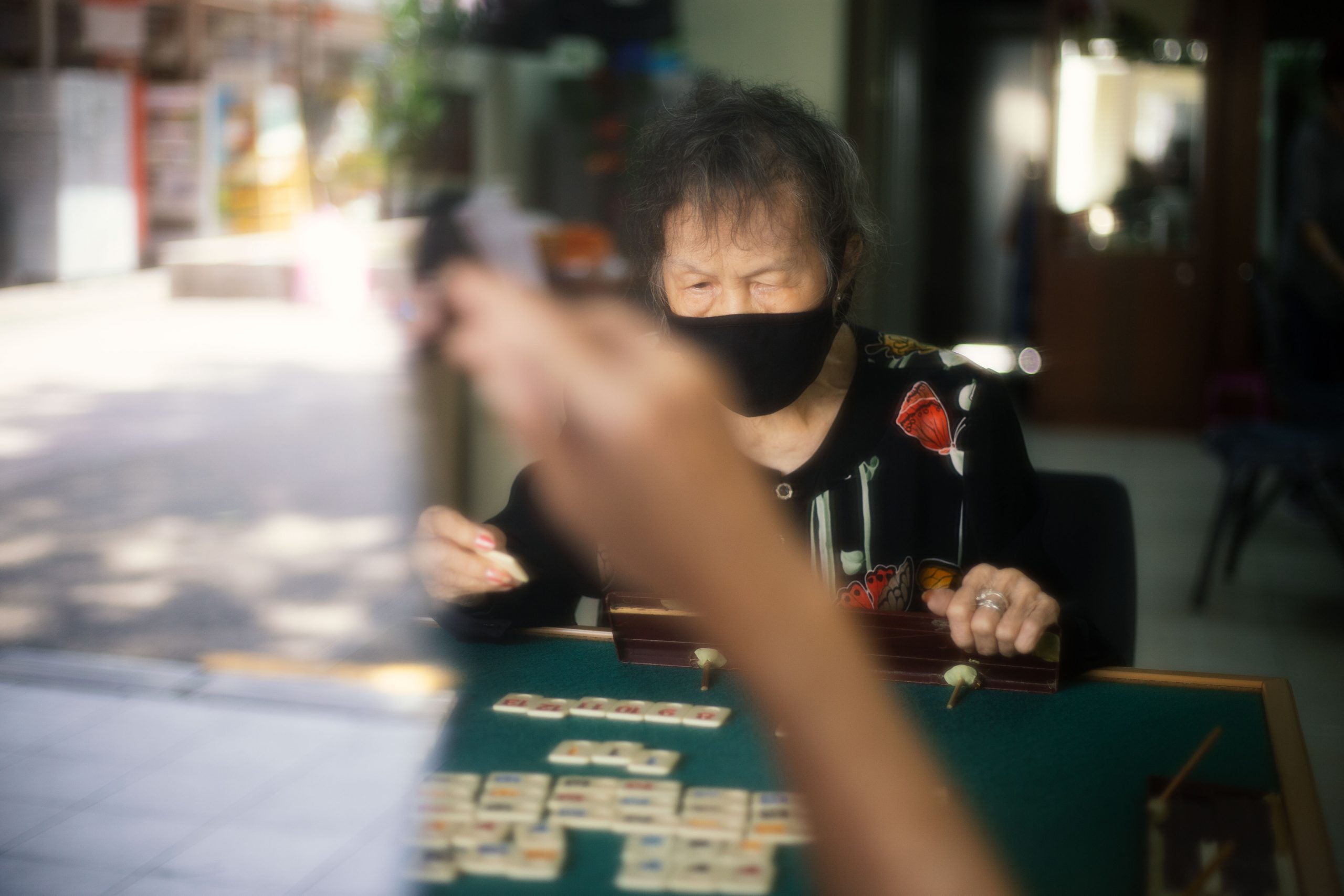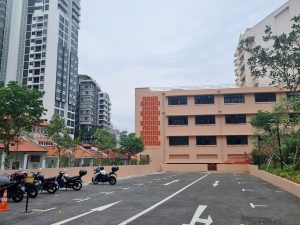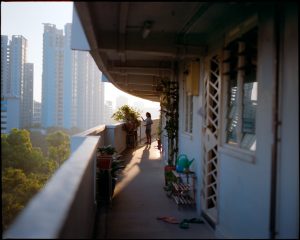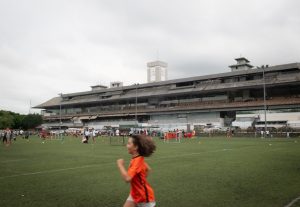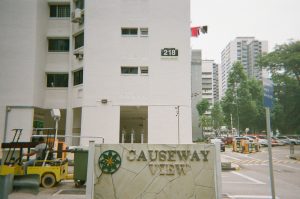Photography by Marisse Caine.
What does it mean to be Singaporean? Many will say that being Singaporean means speaking Singlish, or being kiasu. But in recent years, it can feel like being Singaporean is all about being in a constant state of change—constantly measuring trade-offs against bets on future growth, having to re-establish our identities as the spaces around us face a seemingly never-ending cycle of being torn down and built up, taking with them intimate memories and slices of our culture.
This story is part of a series where we explore the spaces, subcultures, and stories of Singapore that may no longer exist as we pursue urbanisation and progress. It’s not just about conservation and nostalgia, but also about understanding why, as a nation, these transformations are sometimes necessary.
Previously, we wrote about Jalan Hang Jebat and Dover Forest. Here, a multimedia journalist takes us on a tour of the neighbourhoods that have shaped her life so far. As the heartlands continue to evolve, what does the future hold for us and the childhoods of future generations?
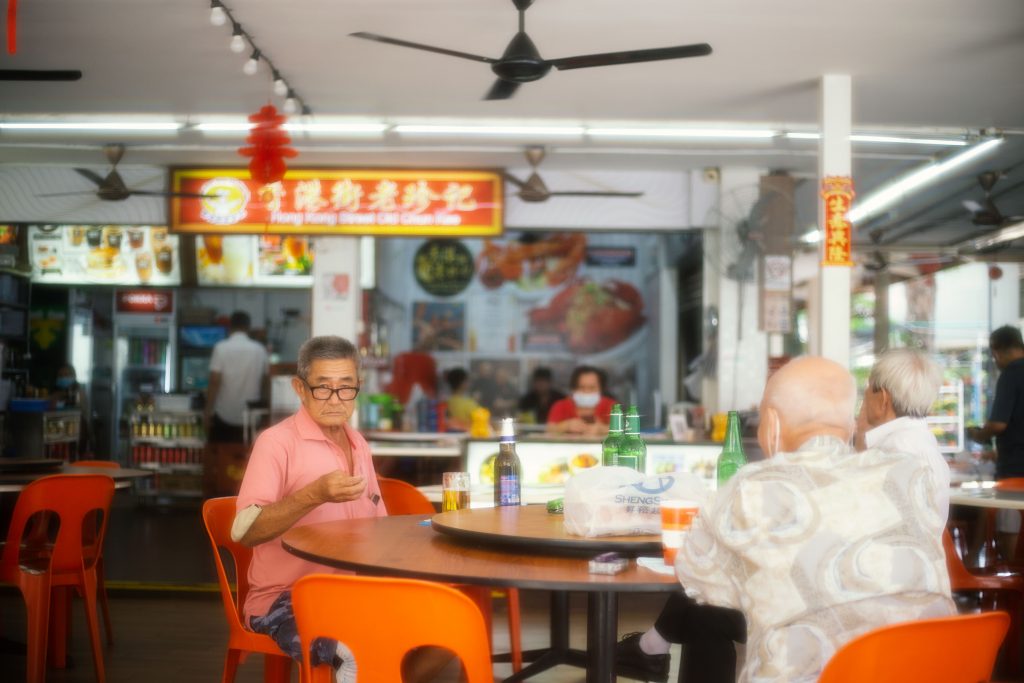
One day, it occurred to me: my childhood is disappearing.
I was standing in line waiting for food at the wet market in Commonwealth Crescent where Two Chefs is located—kopi-c in one hand, cigarette in the other; admiring the ah-peks and their ability to drink like a fish so early in the day. As I was about to lose myself in the thick of it, it hit me.
These places and people, the red bricked buildings and the silver servants of our nation, will very soon cease to exist. Will I be able to remember this version of Singapore that I grew up in without these old people and architecture? Can you imagine going down to the coffee shop with no old people playing music from their radios unapologetically?
Ugh, I couldn’t help thinking. What the fuck.

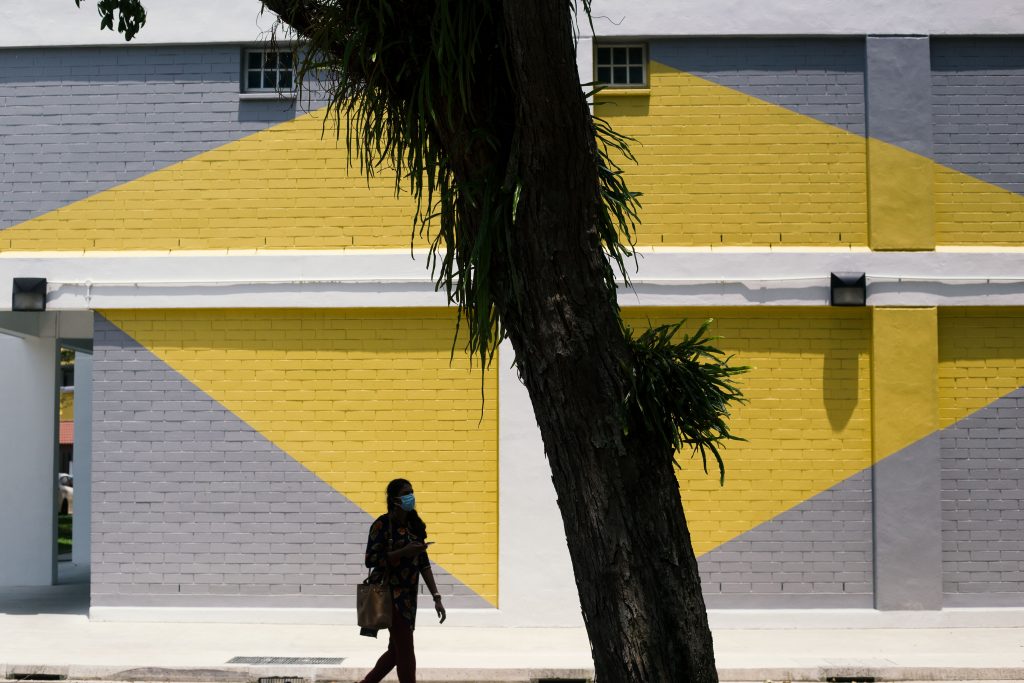
Suddenly, the air grew pregnant with nostalgia brought on by the scent of something familiar. It was the smell of freshly washed hair and chemicals burning from a hair dryer—the scent of my childhood. Following the trail of the scent, I found myself standing outside this time capsule of a Chinese salon. I was completely mesmerized by it. Could this be a portal?
With half my foot in dreamland, I was interrupted by a “You want to come in must pay $2”, to which I responded, “Okay, 明天我换钱 (I’ll pay you tomorrow).” It was the Uncle who owned the salon. We both laughed in common understanding that were both speaking in jest. He wasn’t expecting me to volley back, and certainly not in mandarin. To me, Singapore humour is very ah beng ah lian.
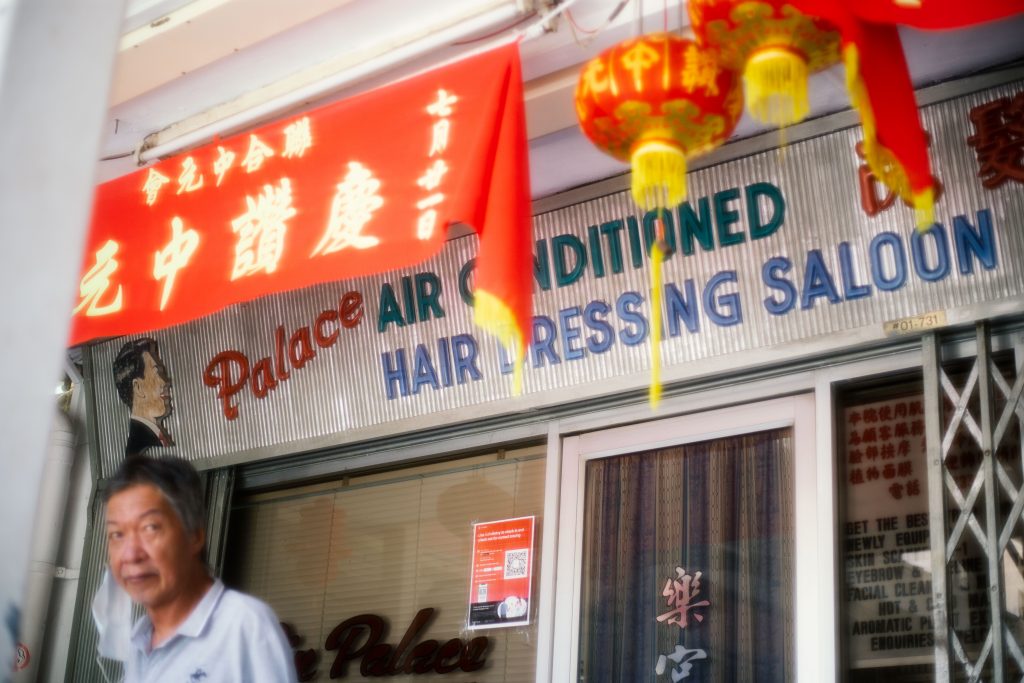
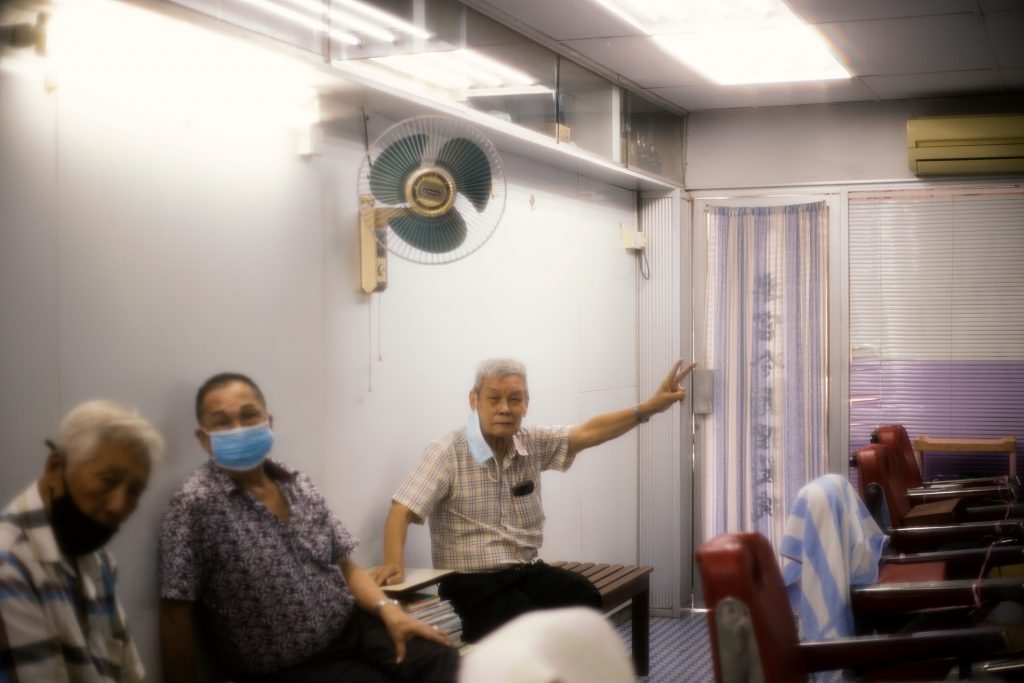
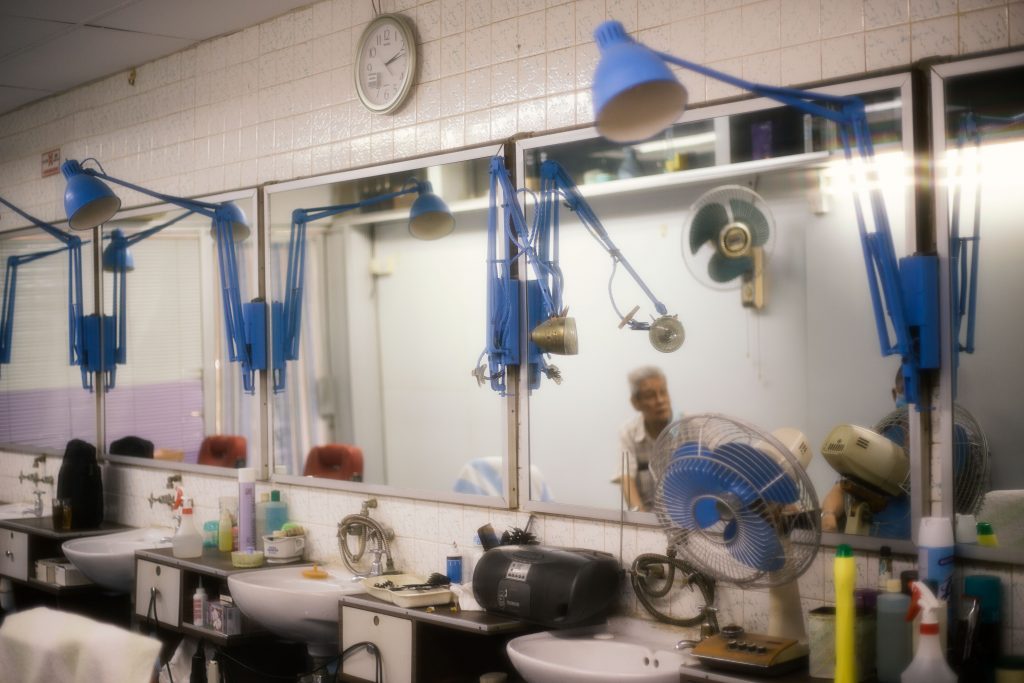
At the door of this beautiful salon, where I least expected it, an innocent greeting brought my world to a standstill. The barber had unintentionally unlocked the blueprint of my being. This is the Singapore I love. It’s the version of Singapore I grew up in. I almost forgot.
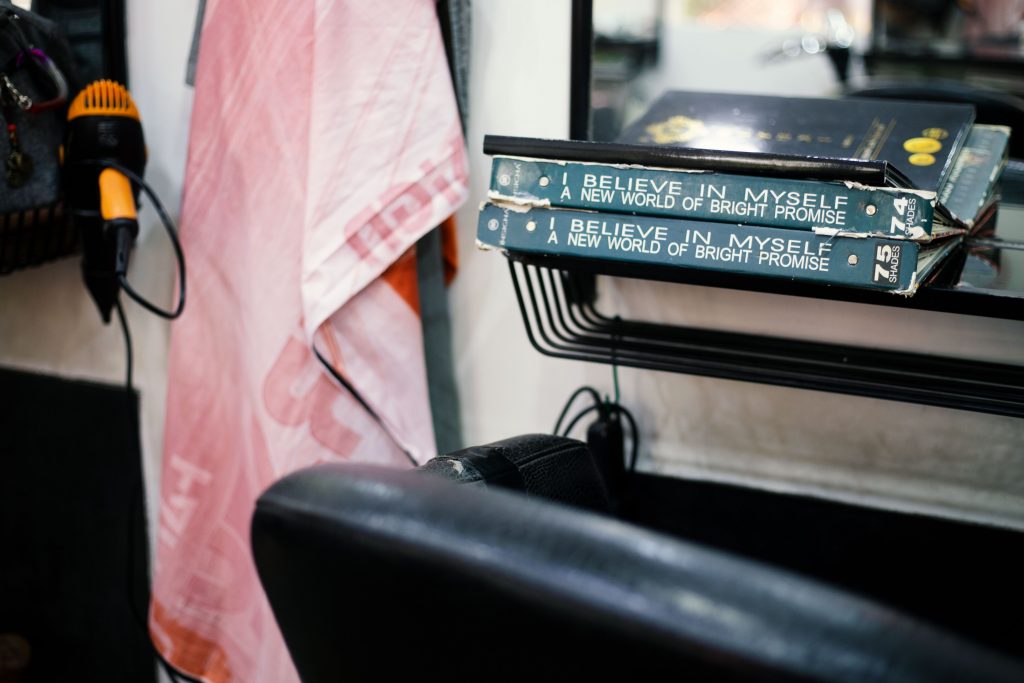
When I was still living in Serangoon Avenue 3, we had a salon in our kitchen because my childhood hairdresser Aunty Ah Eng (who eventually moved to Sengkang) had a clientele that resided mainly in Serangoon. My mum offered her our kitchen to set up a makeshift salon, which soon birthed the most unlikely sisterhood between a Chinese-speaking Singaporean woman and a Filipina immigrant single mother.
Maybe deeply conditioned racial prejudice can be solved by getting your hair done, I remember thinking. Communal spaces seem to effortlessly tackle systemic issues like racism without being explicit about it. Maybe in being exposed to differences, you become more open and empathetic.
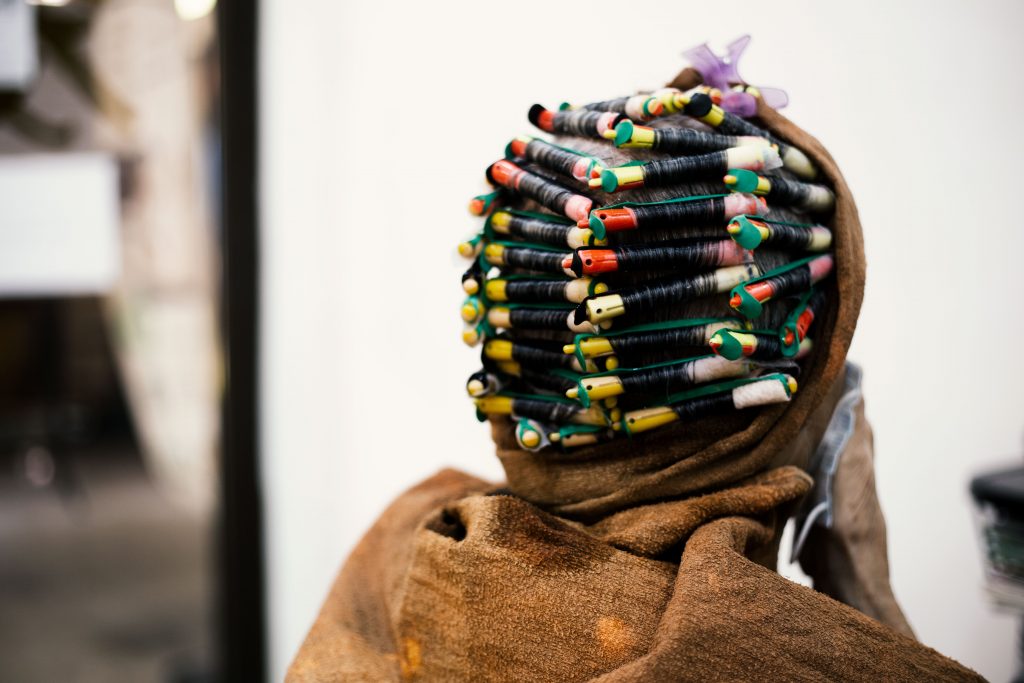
A big bulk of my life was spent sitting at the kitchen counter learning about life from a plethora of kinky, curly-haired older women in samfus. They’d talk to me in mandarin about how to become a better person and woman. Sometimes, my mother would be there and sometimes they’d teach me how to patiently communicate with her. (Shout out to the rest of the Single Mum & Only Child units out there. Damn, that shit is hard.) We’d get so invested in these conversations that all our preconceived biases would disappear and our differences didn’t matter anymore.
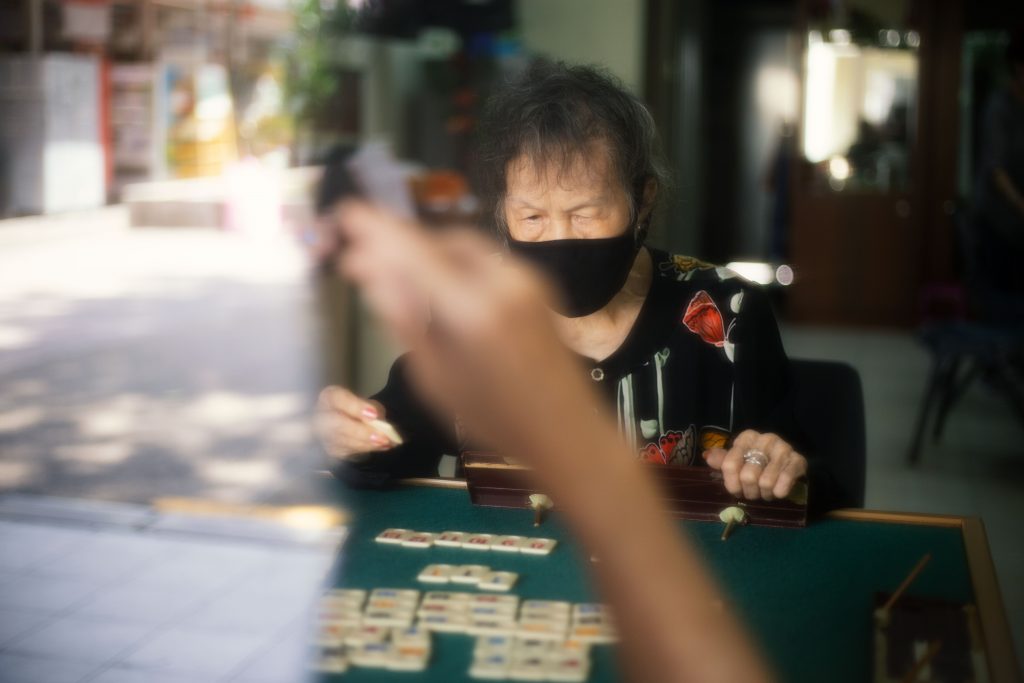
I was raised on the backbone of these women. Maybe I wear rose-tinted glasses, but there’s something very classy and bold about them. They don’t take shit from anyone, handling things instead with a kind of understated elegance. They always look dressed to the nines and they never fail to show up for themselves. I found these women so inspiring that I created a series entitled “A tribute to Grandma Swag.”
These women, much like the tender but stern shop owners of the medical halls and the dapper ah peks with their individualised lawns and rogue papaya trees, created the visual motifs of growing up in the late 90s and early 2000s.
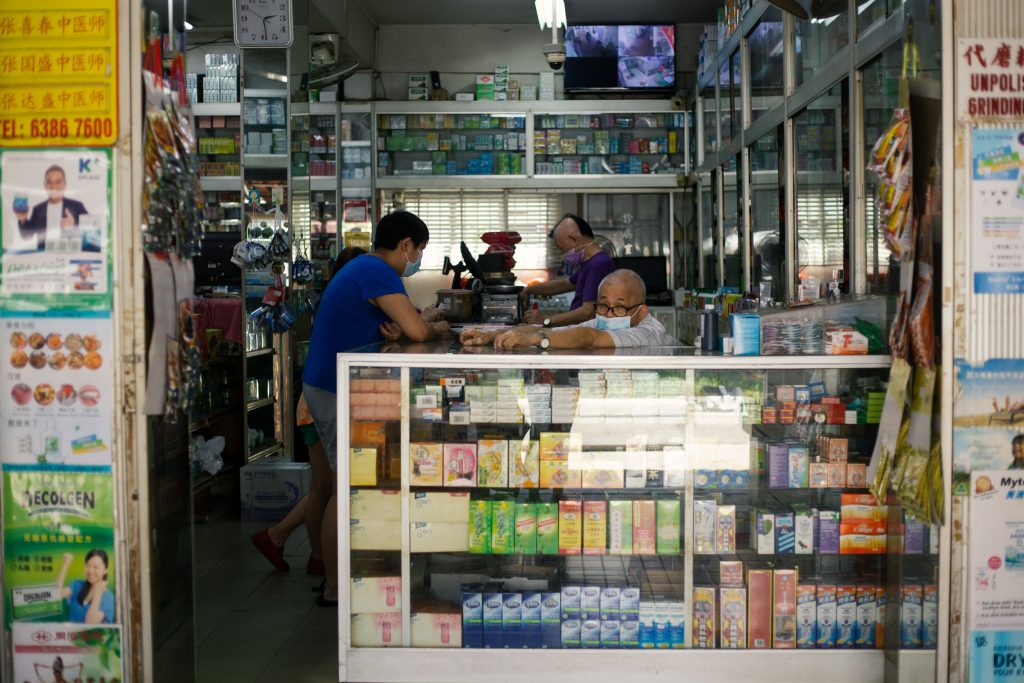
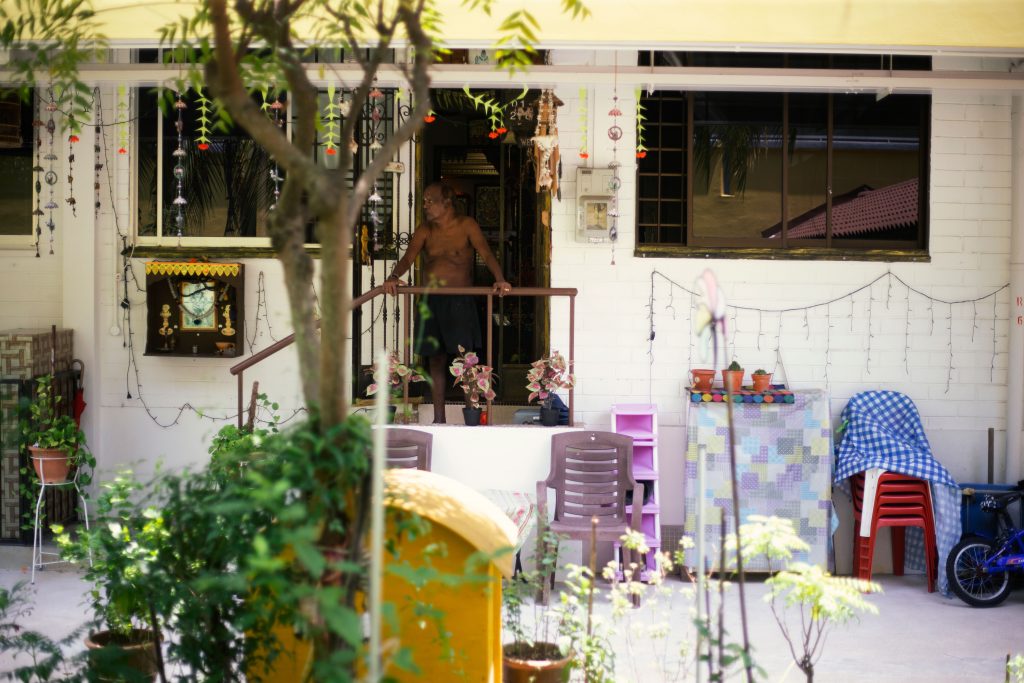
I’m taking this nostalgic trip down memory lane because, like I said, I feel like my childhood is disappearing. Do you see it happening too?
Growing up as a kid in Serangoon Avenue 3 of the 90s meant that the most entertaining distraction was block-catching. Sometimes, on your way to finding a good hiding spot, you could steal a peek into your neighbour’s houses while hiding amongst the smell of fresh laundry. Occasionally, we’d make up these absurd stories about them.
In Serangoon Avenue 3, we had a “crazy woman” akin to Boo Radley in To Kill a Mockingbird. Her name was Peace. I met her at the fitness corner when I was 10. Her brother was our neighbourhood Karang Guni man, and rumour was that he gave up his job to look after her. The door of their house was blood red, decorated with a smorgasbord of oriental ornaments regardless of the time of year. Outside of their flat were stacks and stacks of flattened cardboard boxes blocking the door. Some days, when I was lucky, Peace would be sitting there, and If I was brave enough, we’d have a conversation.
As a child, the sight of this intimidated me, but now I see that they were just regular people in society who had fallen between the cracks.
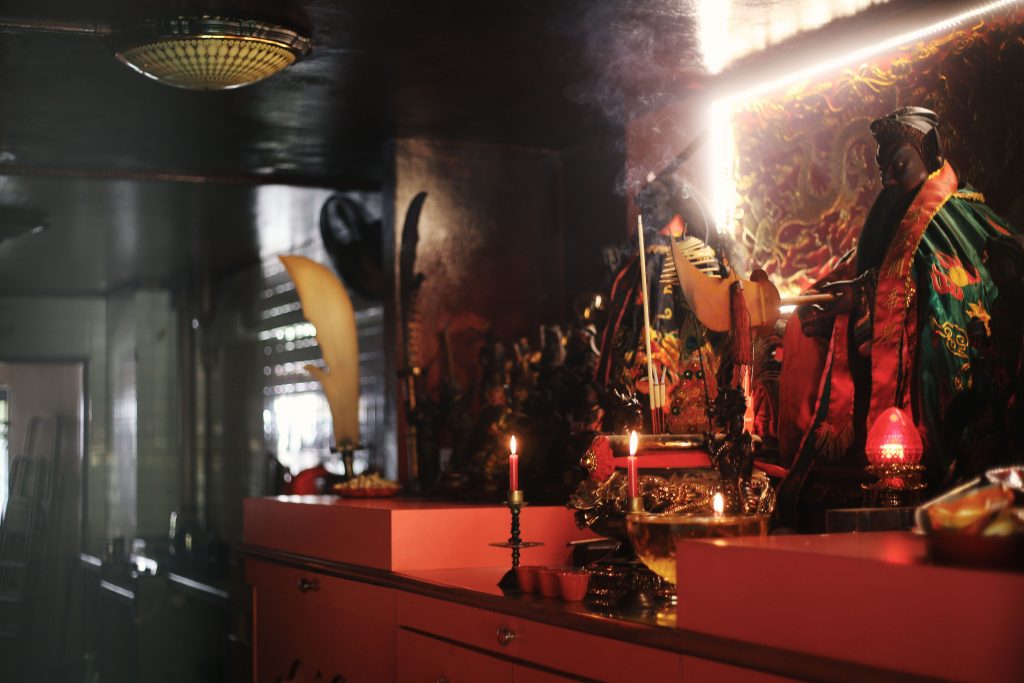
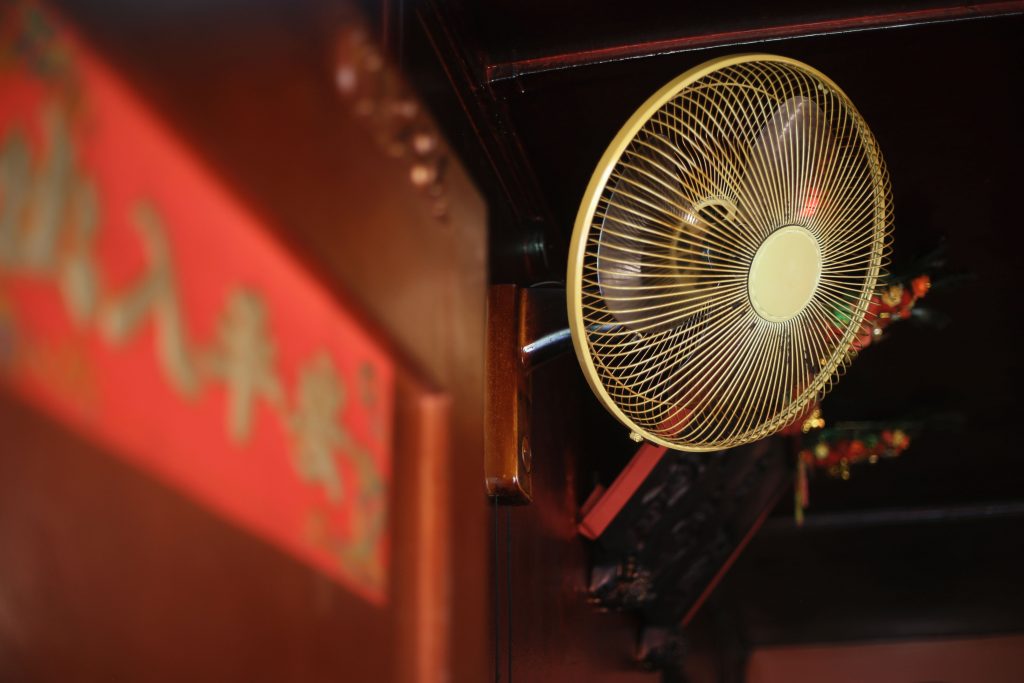
After all, I too never really fit in anywhere. I would be reminded of this whenever I was picking up lunch—always a joyful occasion.
As an Eurasian who speaks fluent mandarin, this has always been my ticket into the hearts of my fellow Chinese friends. You know how they say that it takes a village to raise a child? Because as my mum was usually working, no one was ever really home. As an adult, I now recognise all the little characters who made up the fabric of my neighbourhood, like little gifts of tenderness from the universe.
They’d ask me things like “吃包了吗? (have you eaten) or say things like “哇,你很聪明” (wow, you’re so smart), or “哇,你很乖” (you’re such a good girl.) These were little forms of endearment that built up my sense of wonder and belonging. It didn’t bother me at all that no one was home. My forever mood was “Shiok man, I get to be at the playground till 11pm.”
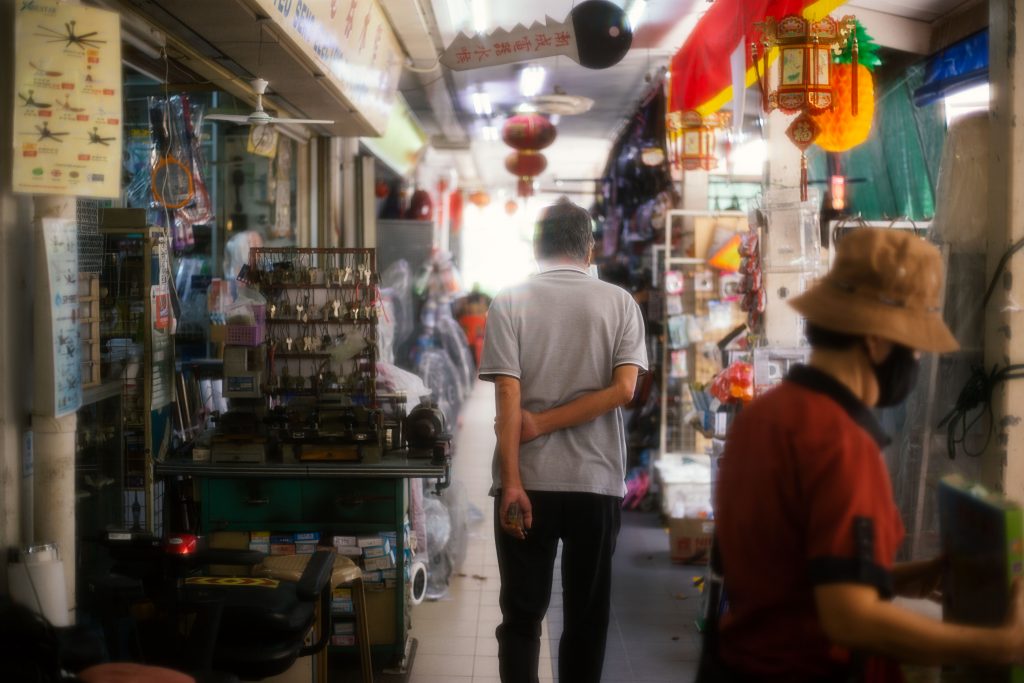
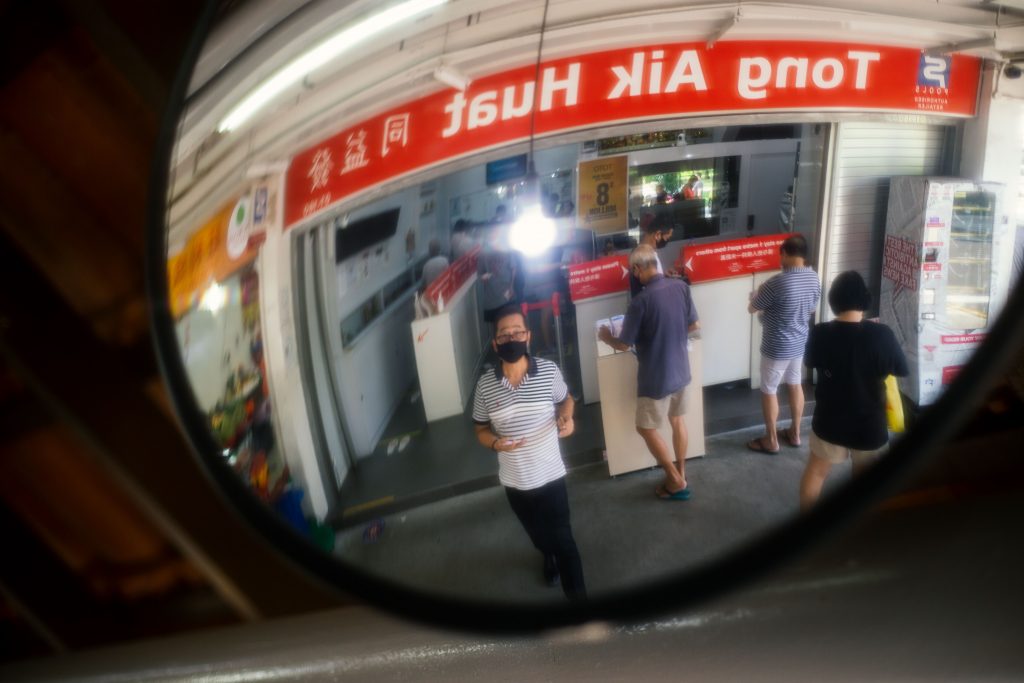
These days, if I look hard enough, I can still find traces of what’s left from my childhood in the pastel-coloured labyrinths, somewhere just around the corner of Serangoon Avenue 3 . We love to recommend visitors from a foreign land places like Marina Bay Sands and Tiong Bahru in order to “see” Singapore. But the true essence of Singapore to me, is hidden in these little heartland neighbourhoods. Neighbourhoods like Commonwealth Crescent.
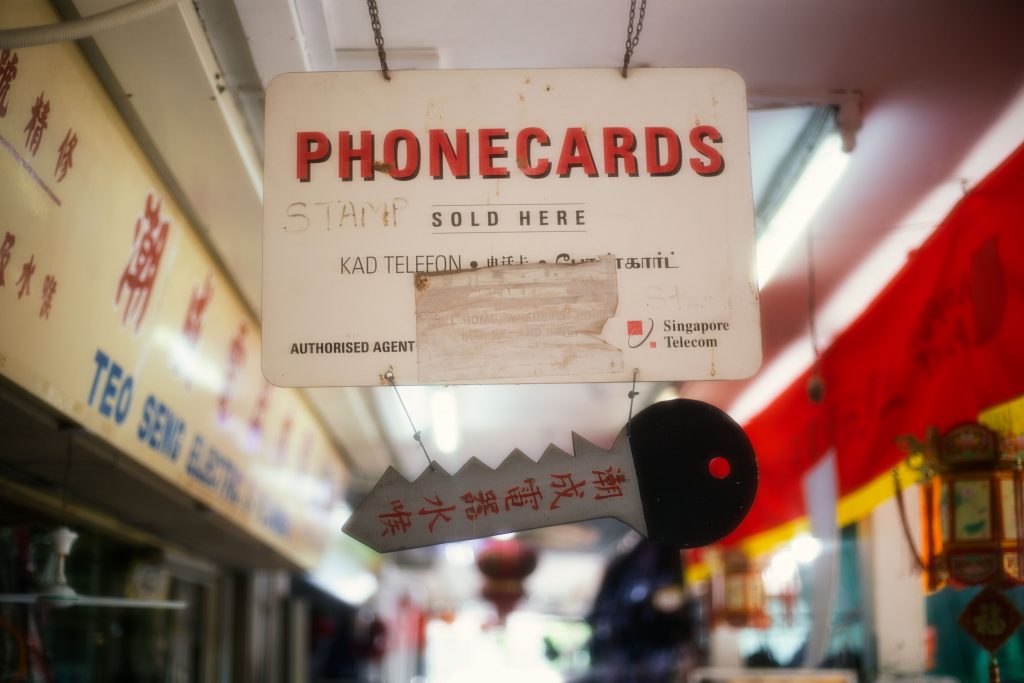
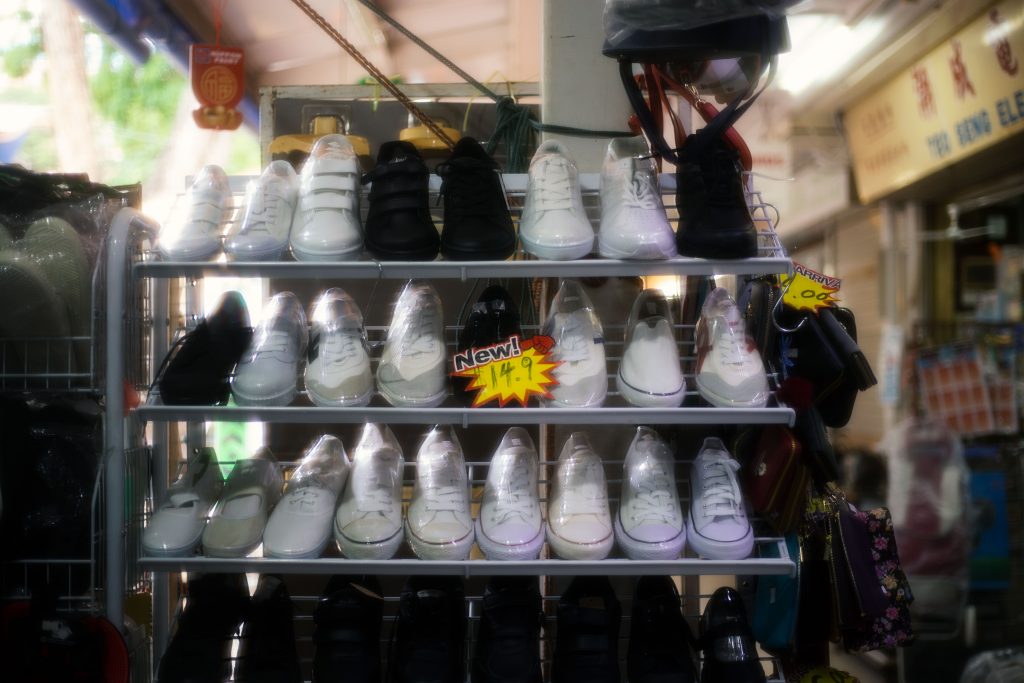
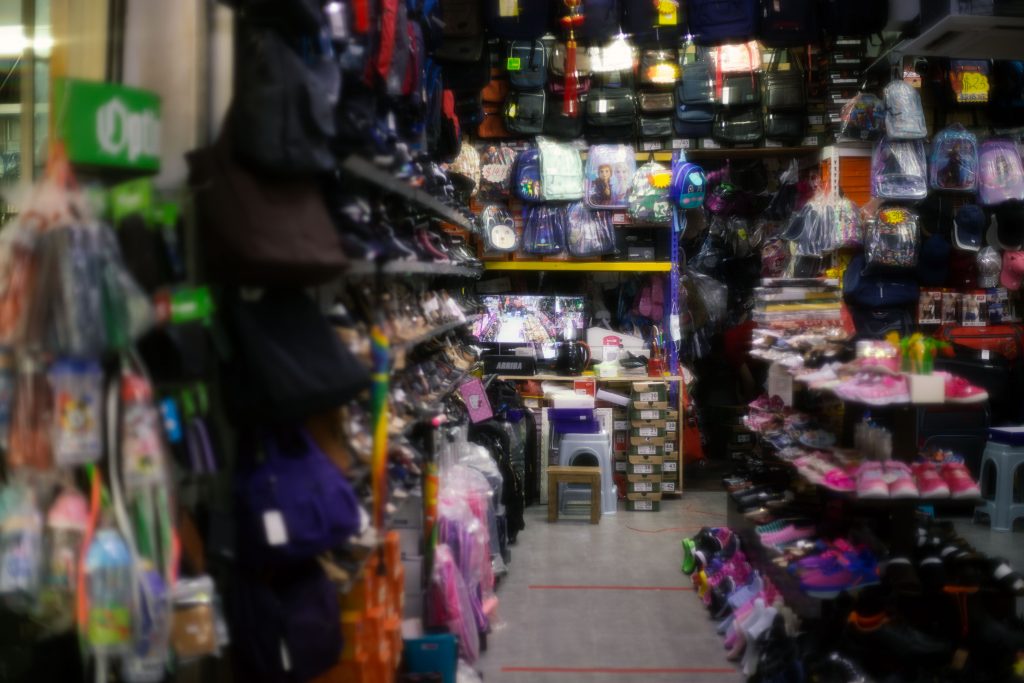
So what was I doing in Commonwealth Crescent and Hougang Avenue 9, thinking about how my childhood is disappearing?
I moved to Sengkang 5 years ago. Before that, my mum and I lost my childhood home because of the financial crisis that hit us in the 90s. We ended up living separately and then I, nomadically for over 4 years, bounced around friend’s houses and neighbourhoods.
Because of the trauma, it became challenging for my brain to grasp the concept of “home.” Spaces, after all, are more than just buildings for functionality. Every space is like a case full of thumb drives, embedded with fragments of who you are, waiting to remind you of something. Kind of like how when you decide to reorganise your folders, and you chance upon an old photograph and suddenly hours have passed from all that reminiscing.
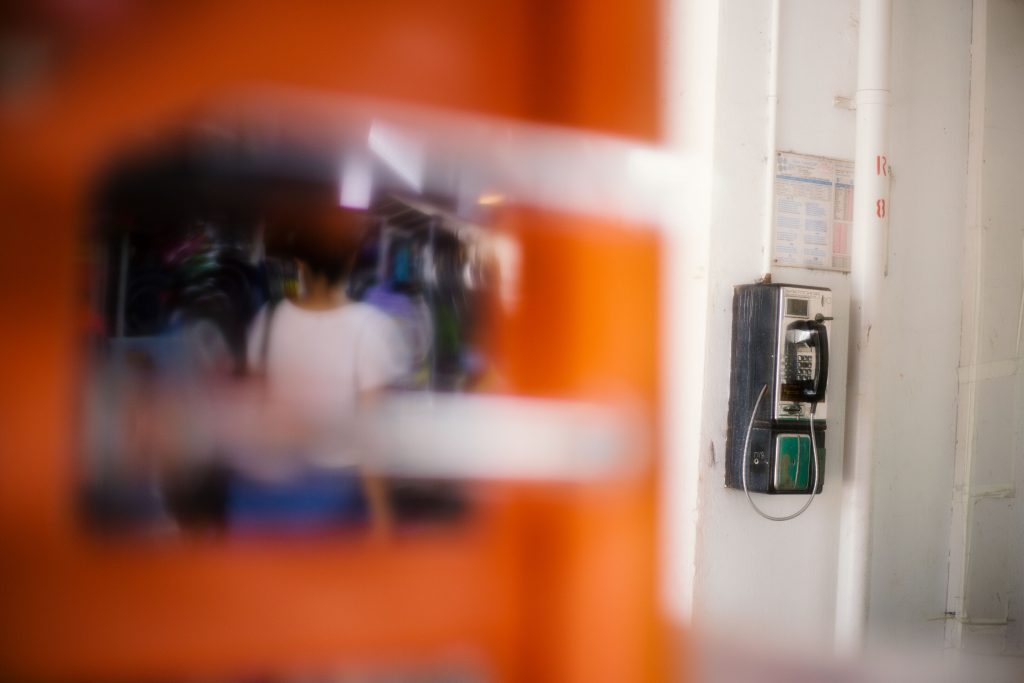

Spaces such as Commonwealth Crescent, Hougang Avenue 9, and Serangoon North Avenue 1 are designed to invite organic interactions between neighbours. A lot of the family ties amongst neighbours go way back for generations. The outdoor communal spaces allow you to breathe. Sometimes while you’re nursing your first cup of coffee and you look up, the person you always see at the mailbox is there, and you say hello. It grows into, “Have you had lunch?” and then gradually into more intimate revelations about each other. Hawkers and shopkeepers have known each other just from decades of sitting outside their stores in the sun during the off-peak hours.
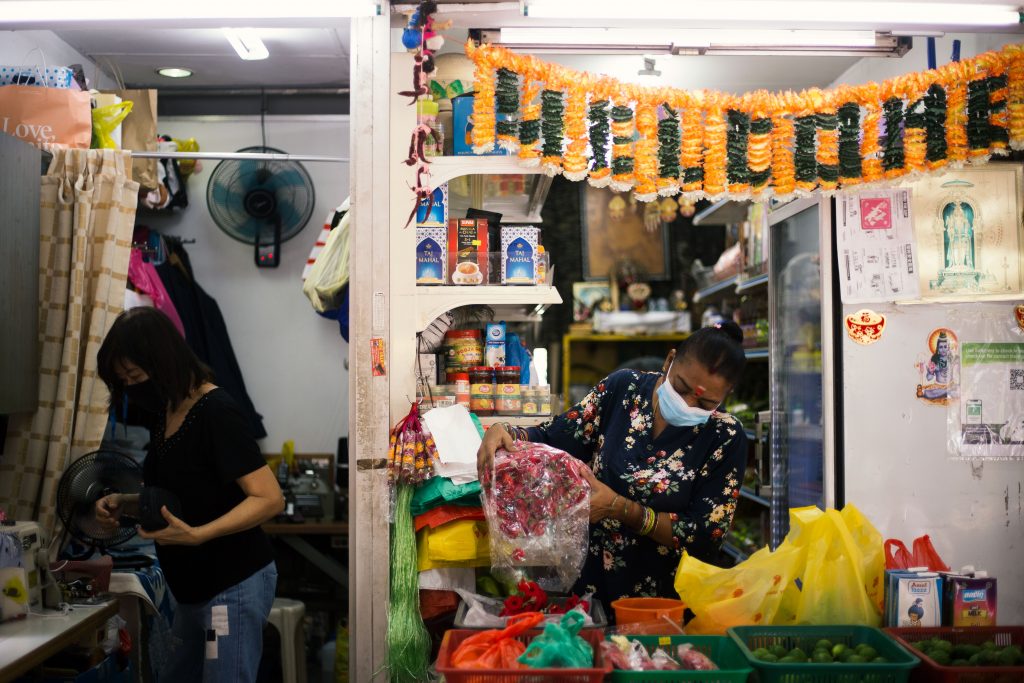
Compare this to Sengkang, where the buildings and void decks are designed in a way that feels so sterile. In some hours when you go for a walk, it feels like you’re the only one living in the neighbourhood because there is no one downstairs. It took about 3 years before a neighbourhood cat appeared. It feels so cold that even animals don’t want to hang out in our new void decks.
The likelihood of a chance encounter is much lower. Many of the communities exist online now in Facebook groups, and the hawkers have become faceless and forgettable.
I understand that in order to progress we must impress. Built to order cosmopolitan eleganza. But I miss bumping into neighbours in the coffeeshop and watching relationships unfold. I miss the football imprints on the void deck wall. I still don’t know everyone who lives on my floor. I suspect it’s because I haven’t seen them before because of how solitary everything’s been, designed for privacy and cleanliness.
I’m wondering now, after this walk down memory lane, how we can move forward. I’m 31 this year and I find myself constantly caught between learning to let go of the past and bracing myself for what Singapore’s future will look like. How much will we continue to lose? What trade-offs should I be prepared to make? Will I age separately and be left behind like the old folks chinatown against the CBD skyline?
Can we retain some of our old designs that have become iconic to our culture—like the marble chess tables under our void decks—but somehow still be progressive? I don’t see much of these interactions and designs anymore in developing neighborhoods like Sengkang. Our older designs seem to encourage integration seamlessly. Perhaps, it can lead us to become more united on our multiculturalism.
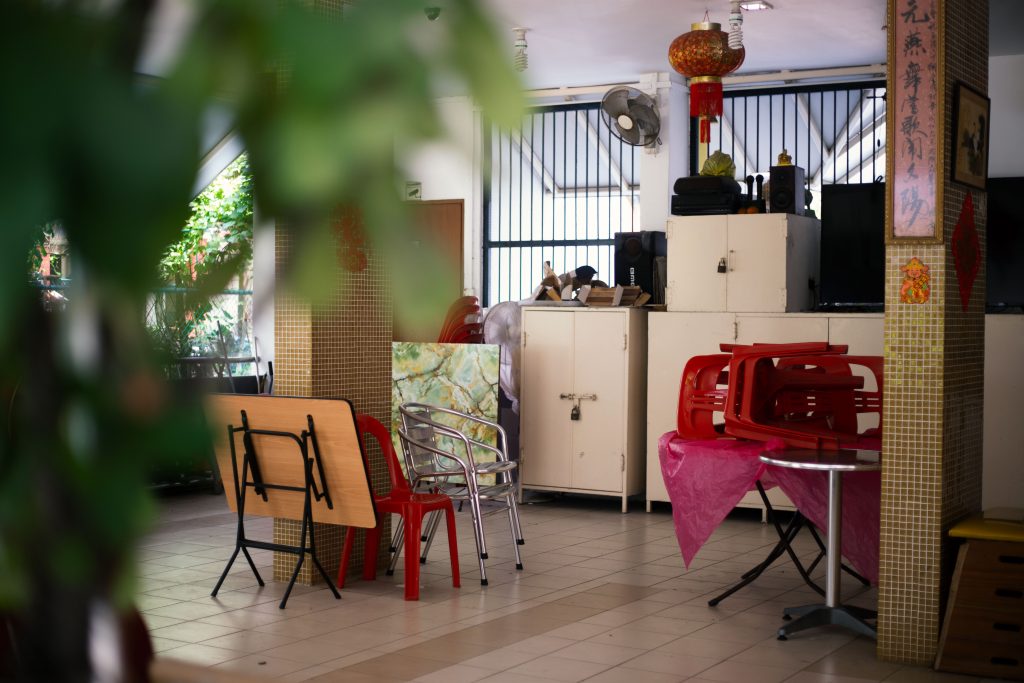
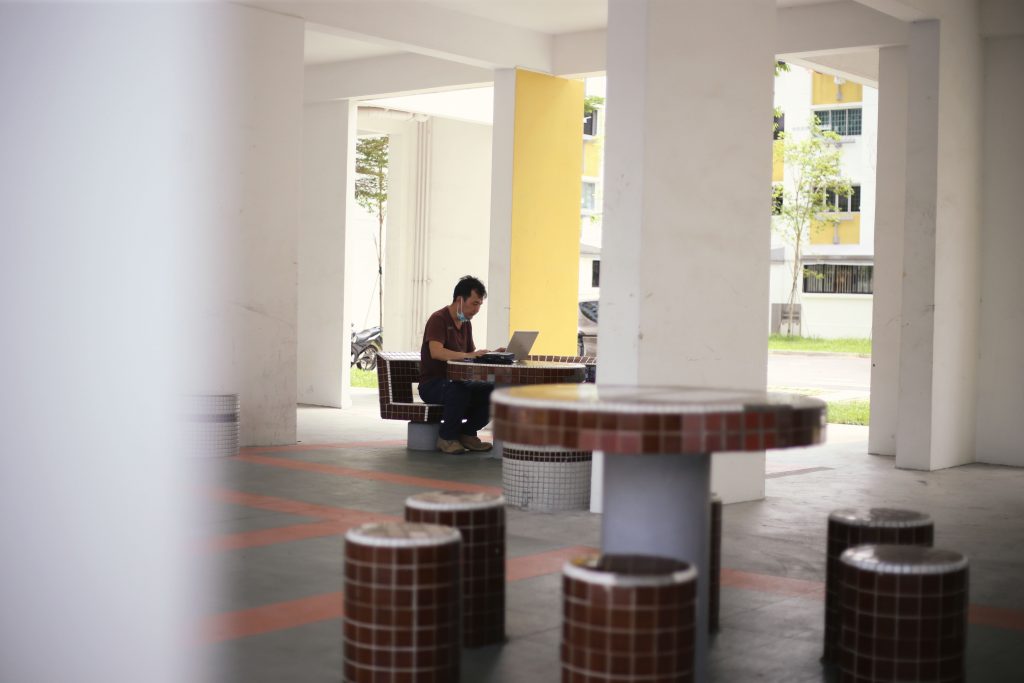
I remember vividly when the construction for NEX Shopping Centre began, and the North East Line was on its way. I was eager with anticipation for a time when the train station would eventually be outside my doorstep, and I would get to central Singapore within 20 minutes.
If I had known that this would be the start of the end of my childhood, I wouldn’t be so eager for urbanisation. I, like many others, enjoy the perks of urbanisation and condo-like HDBs, but the Aunty at the ATM machine with her bank book slowing down the queue tells me otherwise. We need to design our spaces in a way where people from different age demographics are more likely to interact. The presence of these silver servants bring softness to our way of living. They inspire me.
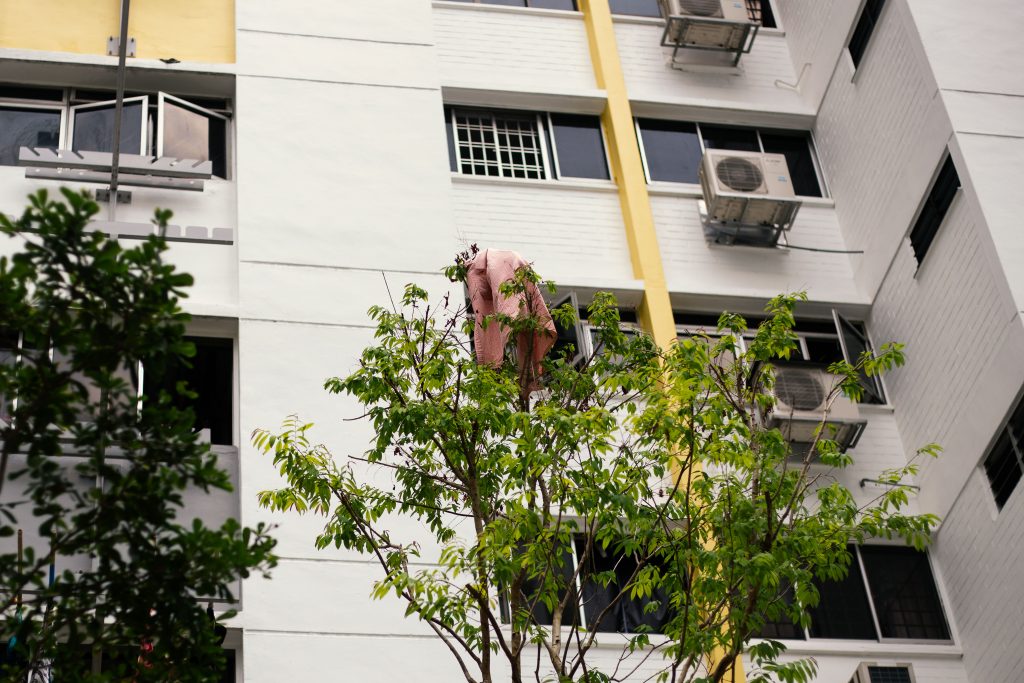
French philosopher Gaston Bachelard said in The Poetics of Space: “I should say: the house shelters day-dreaming, the house protects the dreamer, the house allows one to dream in peace.”
NGL, I never finished that book, but that sentiment stuck with me. I always think about it when I enter a space. I also believe that there is no dreaming if there’s no reminder of home. Whenever I see laundry hanging off a pole, basking in the sun while casting a sharp shadow, it’s the flag of my childhood. And I know I’m home.
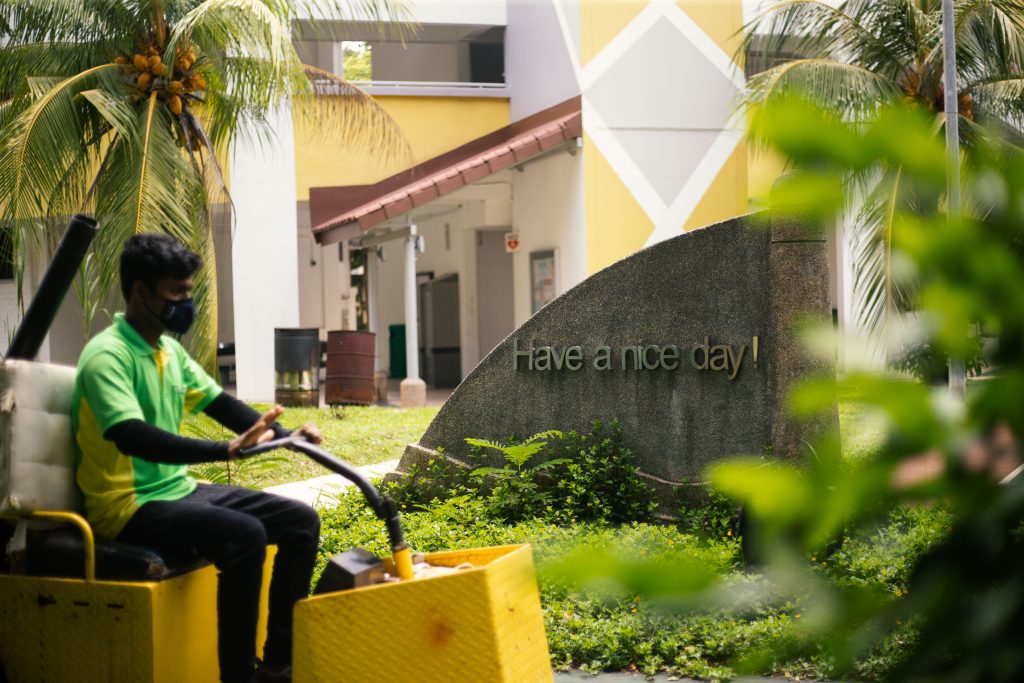
Is your childhood disappearing too? Share it with us at community@ricemedia.co.

